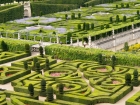
|
APPELEZ LE
118 007
|
et dites
HOTEL
|
|
Tarif: 2,50 € l'appel + 2,50 €/mn
|
||
Castle of villandry |
   |
  |

Description
 |
Nearest hotels - Castle of villandry : |
  |
  (Distance < 2 km)
(Distance < 2 km)rooms ranging from: 82.00 Euros Info: Centrally located in the charming village of Villandry, Logis Auberge Le Colombier is just 100 metres from the famous Chateau. It features a gastronomic restaurant serving local specialities. The traditional rooms feature old stone......  |
  (Distance < 3 km)
(Distance < 3 km)rooms ranging from: 59.00 Euros Info: Located just 100 metres from the famous Villandry castle, Le Cheval Rouge offers comfortable accommodation in a quiet country setting. Guest rooms are cosy and equipped with en suite facilities, a direct phone line and satellite TV. In......  |
  (Distance < 3 km)
(Distance < 3 km)rooms ranging from: 55.00 Euros Info: This hotel is located in Savonnières, on the banks of the Cher River and just a 15-minute drive from the city of Tours. It offers modern and stylish rooms and a large outdoor terrace. Each guest room at Le Saponaire has a private......  |
  (Distance < 6 km)
(Distance < 6 km)rooms ranging from: 80.00 Euros Info: Résidence Hôtel de la Salle is set in a 3-hectare park, located along the wine route in the Loire Valley, 7 km from the Château de Villandry. Breakfast is included and each room has a flat-screen TV. Decorated in a modern style, the......  |
|
<< Previous monuments
|
Quick access
Tourism Villandry
Hotels Villandry car rental Villandry
|
Next monuments >>
Villa Eilenroc Antibes Juan-les-pins
Musee D'archeologie Antibes Juan-les-pins
Musee Picasso Antibes Juan-les-pins |





